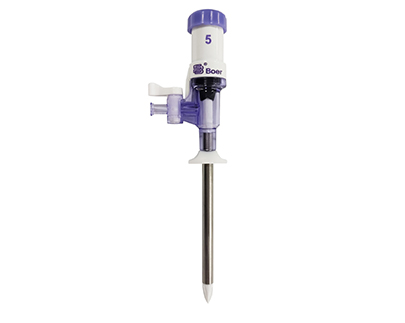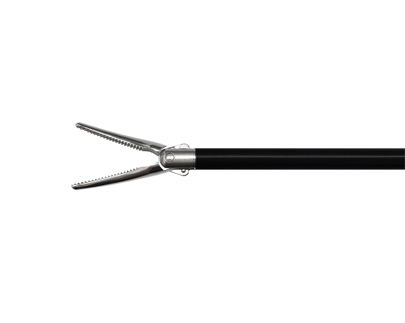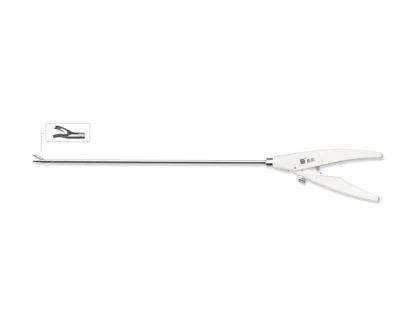Chinese Expert Consensus On Single-Port Thoracoscopic Surgery For Lung Cancer
With the development of endoscopic instruments, experienced surgeons can complete more and more complex single-port sleeve resections. These patients can also benefit from the advantages of single-port surgery with small incisions and quick recovery. Thoracoscopic sleeve resection is currently mainly based on case reports, and its feasibility and safety still need to be confirmed by large-scale clinical studies.
For pneumonectomy, the short-term and long-term results of traditional multi-port thoracoscopic surgery have been confirmed to be comparable to thoracotomy. The consensus is that single-port thoracoscopic surgery is also suitable for pneumonectomy, but the existing evidence is still based on case reports and technical discussions. Mainly, long-term results require further comparative studies.
Under the premise of meeting the surgical indications, single-port thoracoscopy is safe and feasible for segmentectomy. Studies in recent years have shown that single-port thoracoscopic surgery has less blood loss and shorter operation time than traditional multi-port thoracoscopic surgery. , Fast recovery, but lack of high-quality evidence verification. The surgical indications of single-port thoracoscopic segmentectomy are the same as those of traditional thoracoscopic surgery. The key points during the operation include: nodule positioning, instrument selection and placement, and determination of the intersegmental plane. Whether single-port or traditional thoracoscopic lung segment surgery, will benefit from the development of new technologies (such as three-dimensional reconstruction, magnetic navigation, fluorescent dyes, etc.).
Short- and long-term outcomes of single-port thoracoscopy for lung cancer
Compared with open surgery, minimally invasive thoracoscopic surgery has the advantages of less trauma and quicker recovery, and has now become one of the surgical procedures recommended by guidelines for the treatment of lung cancer. As a newer type of minimally invasive thoracoscopic surgery, single-port thoracoscope has no obvious difference in trauma from traditional multi-hole thoracoscope in terms of objective indicators (creatinine, phosphokinase, C-reactive protein). A large number of comparative studies are still needed to evaluate the short-term and long-term effects.
In terms of postoperative quality of life, thanks to the small incision advantage of single-port thoracoscopy, previous studies have confirmed that incision hypersensitivity, numbness, and tenderness after single-port thoracoscopic surgery are significantly less than those of multi-port thoracoscopic surgery. Therefore, the patient satisfaction of single-port thoracoscopic incision is higher than that of multi-port thoracoscopic incision. A study used the Functional Assessment of Cancer Treatment-Lung (FACT-L) to evaluate the quality of life, and the results showed that at 3 months after surgery, single-port thoracoscopy was superior to multi-port thoracoscopic in terms of functional status and emotional status. There were no differences in thoracoscopy, physiological status, social/family, and lung cancer-related symptoms. Another study used the QLQ-C30 and QLQ-LC13 scales to evaluate quality of life, and the results showed that single-port thoracoscopy was not effective in functional domains (physical, role, emotional, social) and general health status at various postoperative nodes (postoperative 2). , 4, and 8 weeks) were superior to porous thoracoscopy.
Application prospect of single-port thoracoscopy
From traditional thoracotomy, to multi-port thoracoscopic surgery, and then to the current single-port thoracoscopic surgery, this development process explains that under the premise of not affecting the curative effect, surgical operations with less trauma and faster recovery are the constant pursuit of surgeons It is also the driving force for related theoretical innovation and scientific and technological progress. Theoretical innovation is reflected in an endless stream of minimally invasive surgical methods, such as subxiphoid single-port thoracoscopy, non-intubation single-port thoracoscopy, and even a combination of non-intubated subxiphoid single-port thoracoscopic surgery [88] , and the natural orifice single-port surgery still in animal experiments.
In addition, the application of the concept of enhanced recovery after surgery (ERAS) to the perioperative management of thoracic surgery is also a performance of theoretical innovation, in which lung protection and airway management are important links, perioperative smoking cessation, respiratory function exercise (Respiratory trainer), application of related drugs (ipratropium bromide, ambroxol, etc.) and other measures can promote postoperative expectoration, reduce postoperative complications and shorten hospital stay. At the same time, technological progress is reflected in a large number of new medical devices, such as hybrid operating rooms, 3D lenses, naked-eye 3D screens, fluoroscopic devices, needle-type single-hole instruments, holographic projections, and robotic single-hole thoracoscopic instruments [93] ]. In the consensus survey, nearly 80% of experts believe that the progress of single-port thoracoscopy is due to the advancement of surgical instruments, 83% of experts believe that single-port thoracoscopy is the development direction of minimally invasive surgery for lung cancer, and 100% of experts Single-port thoracoscopic surgery has been used as a routine operation, and 95% of experts recommend primary hospitals to carry out single-port thoracoscopic surgery. Therefore, single-port thoracoscopic minimally invasive treatment of lung cancer has a lot of room for development in my country.



